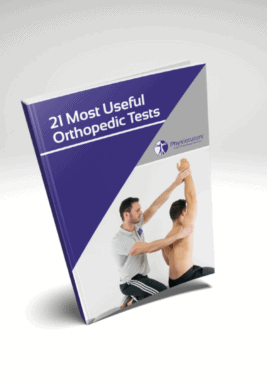Learn
Lhermitte’s Sign | Myelopathy | Neurological Assessment
The L’hermitté sign was originally described as a sign that could be observed in patients suffering from multiple sclerosis. It has later been referenced in conditions such as cervical myelopathy, cervical spondylitis, trauma, and other conditions affecting the dorsal column of the spinal cord. The pathological mechanisms are thought to be hyperexcitability of demyelinated nerves in the spinal cord or other disturbances of the dorsal column such as pressure or stretch.
Evidence on the diagnostic accuracy of the L’hermitté sign is sparse and rates the sign rather poorly, with a positive and negative LR of 1 as reported by Uchihara et al. (1994).
To conduct the test have the patient in standing or sitting position and then ask them to flex the neck. A positive test shows an electrical “type” response or a “pins and needles” sensation down the spine, possibly extending into the extremities near the end range of flexion.
21 OF THE MOST USEFUL ORTHOPAEDIC TESTS IN CLINICAL PRACTICE

Other common neurological screening tests for upper motor neuron lesions are:
Babinski Sign or Babinski Reflex
Like what you’re learning?
BUY THE FULL PHYSIOTUTORS ASSESSMENT BOOK
- 600+ Pages e-Book
- Interactive Content (Direct Video Demonstration, PubMed articles)
- Statistical Values for all Special Tests from the latest research
- Available in 🇬🇧 🇩🇪 🇫🇷 🇪🇸 🇮🇹 🇵🇹 🇹🇷
- And much more!








